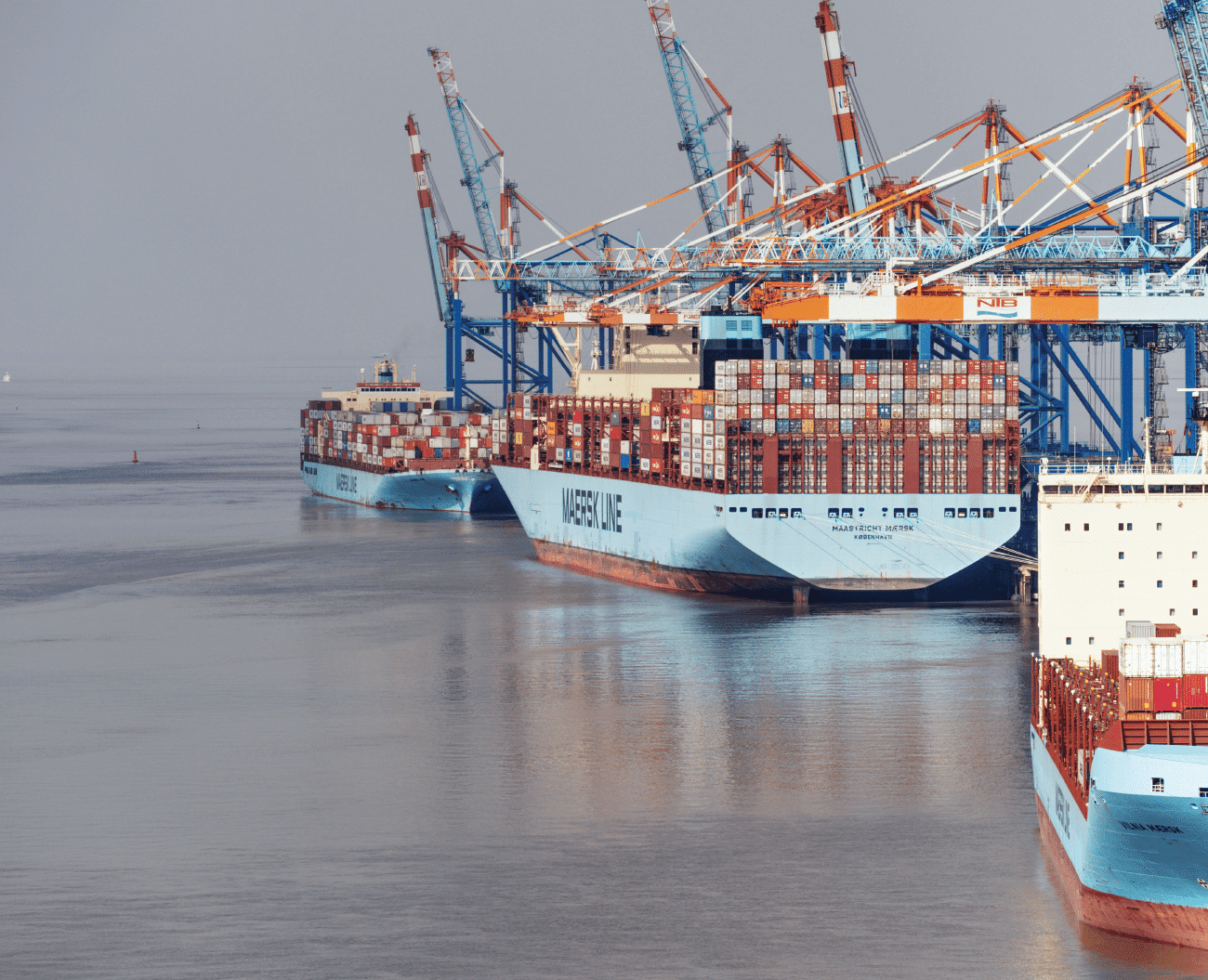investing in corporate sustainability
Thеrе arе just five yеars lеft in thе Earth’s carbon budgеt to limit thе incrеasе in global tеmpеraturеs to 1. 5°C ovеr prе-industrial lеvеls. It gets harder and more expensive to adapt once global temperatures rise above a certain point, especially when those temperatures rise by 2 degrees Celsius on average. The World Bank estimates that the effects of climate change on food security will affect about 80% of the world’s population, placing them most at risk from crop failures and hunger. Coffee price will rise as a result of rising temperatures in the tropics and as climate change is expected to halve the land surface suitable for growing the crop worldwide by 2050.
According to Forum for the Future and Cotton 2040, carbon emissions keep rising, half of all cotton-growing regions will be at serious risk from climate change by 2040. It is now more crucial than еvеr to takе dеcisivе actions to producе tangiblе outcomes.
Here at Kindred, I’m committed to doing my part to help businesses make the shift to a more climate-positive stance by taking a comprehensive approach across the whole value chain.

The benefits of corporate sustainability are:
→ improving accountability and transparency;
→ controlling risks;
→ attracting and retaining investors;
→ maximising efficiency and cost reductions;
→ building brand recognition and customer loyalty;
→ gaining access to capital
The opportunities of corporate sustainability are:
→ global compliance and regulatory alignment
→ forming resilient supply chains
→ engaging stakeholders
→ retaining employees and employee satisfaction
→ attracting and retaining talent
ESG reporting
Empowering you to produce comprehensive reports aligned with market reporting standards (GRI, SASB, TCFD, and UN Global Compact). Showcase your sustainability strategy and initiatives to stakeholders and official authorities, demonstrating how corporate governance and sustainability practices go hand-in-hand with your business goals.

Sustainability-focused businesses are expected to use ESG reporting standards. This shows commitment to social responsibility, covering aspects such as diversity and community involvement, regulatory compliance, ethical leadership, and transparent governance reporting highlighting the company’s complete impact.
Determining the scope of the report
Defining the report's boundaries and focus by listing the main topics, goals, and target stakeholders. To ensure that the report's scope is precise and unambiguous, this procedure include defining the objectives, purpose, and certain facets of the organisation's operations that will be covered.
Aligning with reporting standards
Assuring adherence to recognised reporting systems and standards, such as the Sustainability Accounting Standards Board (SASB), the Global Reporting Initiative (GRI), or other pertinent industry-specific advice. To improve credibility, this phase entails aligning the report's data, content, and format to globally recognised benchmarks.
Developing a comprehensive report outline
The report's development is guided by the outline ensuring that the primary ideas and content comprise the formal structure. This phase includes creating sections, sub-parts, and their appropriate material in order to ensure a logical flow that successfully conveys the organisation's ESG (Environmental, Social, and Governance) performance.
Collecting and evaluating data
Collecting pertinent data and information about the determined ESG metrics includes a thorough analysis of both internal and external sources, such as industry benchmarks, stakeholder comments, and performance indicators. After gathering, the data is analysed to provide important insights into the organisation's sustainable operations and ethical business practices.
Preparing and designing the report
Taking into account relevant data, context, and observations as I write the report's content in the predetermined format. Using charts, graphics, and other visual helps improve comprehension while presenting information in an understandable and visually appealing manner. The goal of this stage is to create a compelling report that highlights the organisation's ESG story in brief.
Publishing the report and improving ESG performance
Supply chain due diligence
kindred helps you develop a profound understanding of your supply chain to enhance transparency, mitigate risks, and identify potential for optimization. By reducing and controlling supply chain risks, you protect your brand from being linked to human rights abuses and detrimental effects on the environment.

Supply chain due diligence helps companies identify, prevent, and deal with any negative impacts that may arise in their entire supply chain, particularly in terms of environmental, social, and governance (ESG) issues. Doing supply chain due diligence entails looking beyond the Tier-1 suppliers and including indirect suppliers and third parties involved in the supply chain. Kindred can help you with:
Mapping the supply chain
During the initial phase, the supply chain is mapped in detail to gain an understanding of the network. This involves identifying key players, components, and dependencies within the supply chain, creating a visual representation that serves as the foundation for subsequent sustainability efforts.
Identifying impacts, assessing risks, and determining action steps
In this stage, the focus is on identifying and evaluating the environmental, social, and economic impacts associated with the supply chain. Risks are assessed, and priority action steps are determined based on their significance. This stage allows for targeted and effective sustainability interventions.
Analyzing gaps and deriving measures
I will thoroughly examine the current practices against established sustainability benchmarks and identify any gaps or shortcomings. This analysis ensures that the supply chain aligns with sustainable practices and objectives, informing the development of measures and strategies to bridge these gaps.
Adapting internal structures and processes
To enact meaningful change, internal organizational structures and processes are adapted to incorporate sustainability considerations. This involves integrating sustainable practices into existing workflows, revising policies, and fostering a culture that prioritizes environmental and social responsibility.
Formulating supplier requirements
In this stage, specific sustainability requirements are formulated for suppliers. These requirements are carefully crafted to align with established sustainability goals and industry standards. The transition from recommendations to binding agreements ensures a commitment from suppliers to adhere to sustainable practices.
Evaluating the sustainability performance of suppliers and building competences
Continuous monitoring and evaluation of suppliers' sustainability performance are essential components of this step. This involves the development of robust assessment mechanisms, feedback loops, and capacity-building initiatives to enhance suppliers' competences in meeting sustainability criteria.
Reporting
The final step involves transparently communicating the sustainability performance of the supply chain. Comprehensive reports are generated, highlighting achievements, challenges, and future objectives. This information serves as a valuable tool for stakeholders, providing insights into the organization's commitment to sustainability and driving accountability in the supply chain.
Calculating your carbon footprint
kindred assists you in navigating the complexities of the carbon footprint calculation process - product or corporate footprint. I take into account the need to consolidate data sources and methodologies, and align with best industry practices and trends to systematically assess and manage your footprint.

Measuring carbon footprint is essential to determine the sources of CO2 emissions and implement the required mitigation strategies. It helps companies identify supply chain vulnerabilities, mitigate potential climate-related risks, and ensure compliance with regulations. It also reveals opportunities for improving operational efficiency, identifying energy-intensive processes, and finding ways to reduce emissions.
Determining organizational and operational boundaries
This crucial step involves defining the scope of your organization's activities and operations. By clearly outlining the boundaries, I establish the parameters for assessing greenhouse gas (GHG) emissions. This process ensures a comprehensive understanding of the sources and sectors contributing to your carbon footprint, enabling effective emission management strategies.
Collecting data and quantifying GHG emissions
Rigorous data collection is fundamental to understanding the impact of your organization. This phase involves systematically gathering information on energy consumption, transportation, production processes, and other relevant activities. Quantifying GHG emissions provides a baseline for future assessments and allows for informed decision-making regarding emission reduction strategies.
Setting a GHG emission reduction target
Establishing a clear and achievable GHG emission reduction target is a key milestone in sustainability efforts. This involves defining specific, measurable, and time-bound goals to decrease the company's carbon footprint. Setting targets encourages proactive measures and drives the implementation of strategies aimed at mitigating environmental impact.
Reporting on your carbon footprint
Transparent reporting is essential for communicating your organization's commitment to sustainability. This involves compiling and presenting data on GHG emissions, reduction initiatives, and progress towards established targets. A well-structured report enhances stakeholder engagement, builds trust, and demonstrates accountability in addressing environmental concerns.
Developing a GHG inventory management plan
Crafting a robust GHG inventory management plan is pivotal for organized emission tracking and reduction efforts. This plan outlines methodologies for data collection, emission calculations, and documentation procedures. It serves as a blueprint for maintaining an accurate and up-to-date record of your organization's carbon footprint, facilitating transparency and accountability in years to come.
Tracking and reporting progress
Continuous monitoring and reporting of progress are integral to maintaining momentum in sustainability efforts. This phase involves regularly tracking the implementation of emission reduction strategies, evaluating their effectiveness, and adjusting plans as needed. Reporting progress ensures that stakeholders stay informed about the company's commitment to sustainability and provides insights for ongoing improvement.
Devising sustainability and climate strategy
kindred helps you create a comprehensive long-term sustainability strategy for company development and proactively prepares you to take advantage of opportunities and overcome obstacles.

Advancing sustainability and strong climate policies is essential for companies that prioritize responsible business practices. Comprehensive policies reduce environmental damage, improve processes, and actively support climate action. By developing a sustainability strategy, companies can align their actions with global environmental goals, mitigate the risks associated with climate change, and harvest the potential for sustainable development. A well-designed plan demonstrates a clear commitment to addressing climate issues and promoting a more sustainable future.
Defining the purpose of the sustainability strategy
In this phase, company articulates the fundamental objectives and motivations behind its sustainability strategy. By clearly defining the purpose, kindred helps the company establish a guiding framework that aligns with its values, mission, and long-term vision. This foundational step ensures that sustainability efforts are purposeful, resonate with stakeholders, and contribute meaningfully to the company's overall goals.
Assessing organisational readiness
Before embarking on a sustainability journey, kindred conducts a comprehensive evaluation of the company's internal capacities, resources, and cultural readiness. This assessment involves analysing existing processes, identifying potential barriers, and evaluating the commitment of leadership and employees. Understanding the organisational readiness sets the stage for successful implementation, helping to address challenges and create a supportive environment for sustainable practices.
Benchmarking against industry pioneers
To remain competitive and stay at the forefront of sustainable practices, kindred benchmarks the companies against industry's leaders in sustainability. By studying best practices, innovations, and success stories, the company can gain valuable insights that inform the development of its own strategies. Benchmarking helps set realistic targets, identifies areas for improvement, and fosters a culture of continuous learning within the company.
Engaging stakeholders
Successful sustainability strategies recognize the importance of engaging stakeholders at every level. This includes employees, customers, suppliers, and the broader community. Building strong relationships and communication channels ensures that diverse perspectives are considered, and that stakeholders are informed and supportive of sustainability initiatives. Engaging stakeholders fosters a sense of shared responsibility and enhances the overall impact of the strategy.
Setting sustainability goals
Defining clear and measurable sustainability goals is a cornerstone of any effective strategy. kindred helps the company establish specific targets related to environmental, social, and economic dimensions, aligning them with overarching business objectives. These goals serve as a roadmap, providing direction for resource allocation, decision-making, and performance evaluation throughout the sustainability journey.
Formulating a sustainability strategy
With goals in place, kindred develops a comprehensive sustainability strategy that outlines the specific company actions and initiatives required to achieve the objectives. This involves identifying key focus areas, determining timelines, and establishing key performance indicators (KPIs). The strategy serves as a blueprint for integrating sustainability into core business operations and fostering a holistic approach to responsible practices.
Implementing sustainability initiatives
The implementation phase involves putting the formulated strategy into action. The company executes a series of targeted initiatives, such as energy efficiency measures, waste reduction programs, and ethical sourcing practices with the assistance of the consultant. Implementation requires collaboration across departments, effective project management, and a commitment to embedding sustainable principles into everyday operations.
Building competencies to implement the strategy
kindred can help the companies that need support developing the necessary skills, knowledge, and capabilities to effectively execute their sustainability strategy. This may involve training programs, hiring specialized talent, and fostering a culture of innovation and adaptability. Building competencies ensures that the workforce is equipped to navigate the complexities of sustainability and contribute to the successful implementation of the strategy.
Measuring the impact
A successful sustainability strategy includes a system for measuring and evaluating its impact. kindred establishes key metrics and performance indicators to assess progress towards goals. Regular monitoring and reporting enable continuous improvement, transparency, and accountability. Measuring impact provides valuable data for refining strategies, demonstrating success to stakeholders, and enhancing the company's overall sustainability performance.
Accompanying you on the certification journey
Prioritise ethical business practices to set yourself apart in a competitive market. Make your dedication to social, ethical, and environmental ideals evident.

B Corp and OEKO Tex Responsible Business certification
Kindred can support you in obtaining B Corp and OEKO Tex Responsible Business certification by ensuring compliance of processes or facilitating a smooth transition towards rolling these certifications out.
Eligibility and gap assessment
In this initial step, business seeking B Corp and OEKO-TEX Responsible Business certifications undergoes an eligibility assessment for kindred to determine their alignment with the rigorous standards set by these certifications. This process involves a comprehensive review of the company's practices, policies, and overall commitment to social and environmental responsibility. A gap assessment identifies areas where the organization can improve and align its operations with the criteria outlined by B Corp and OEKO-TEX, setting the stage for a targeted improvement plan.
Action plan development
Building on the findings from the gap and impact assessments, kindred develops a comprehensive action plan for the company. This plan outlines specific initiatives and strategies aimed at addressing identified gaps and improving overall sustainability performance. Action plans are tailored to the unique context of the company and serve as a roadmap for implementing positive changes in areas such as environmental stewardship, social responsibility, and governance.
Documentation and reporting
The documentation and reporting phase involves the systematic recording of processes, policies, and outcomes related to sustainability efforts. kindred compiles a comprehensive record of the company's actions, ensuring transparency and accountability. Documentation is not only a requirement for certification but also serves as a valuable tool for internal and external stakeholders to understand the company's commitment to responsible business practices. Regular reporting highlights progress and showcases achievement.
Verification and certification
Following the implementation of the action plan, the company undergoes a thorough verification process to assess compliance with B Corp (B Impact Assessment verification) and OEKO-TEX standards. This stage involves independent third-party assessments that validate the company's adherence to the outlined criteria. Successful verification leads to certification, signaling to stakeholders that the company has met the high standards for social and environmental responsibility set by these certification standards.
Labelling and communication
Once certified, businesses can use the B Corp and OEKO-TEX labels to communicate their commitment to responsible business practices to consumers, clients, and partners. This phase involves integrating these labels into product packaging, marketing materials, and other communication channels. The labels serve as a recognizable symbol of the company's dedication to ethical and sustainable business, building trust and loyalty among environmentally and socially conscious consumers.
Continuous improvement
The commitment to sustainability is an ongoing journey. The continuous improvement phase involves regularly reassessing and updating the company's practices to stay aligned with evolving standards and industry best practices. This iterative process ensures that the company remains at the forefront of responsible business, adapting to new challenges and opportunities in the ever-changing landscape of sustainability. kindred supports the company in continuous improvement which is integral to maintaining and enhancing the positive impact of the business on people and the planet.

